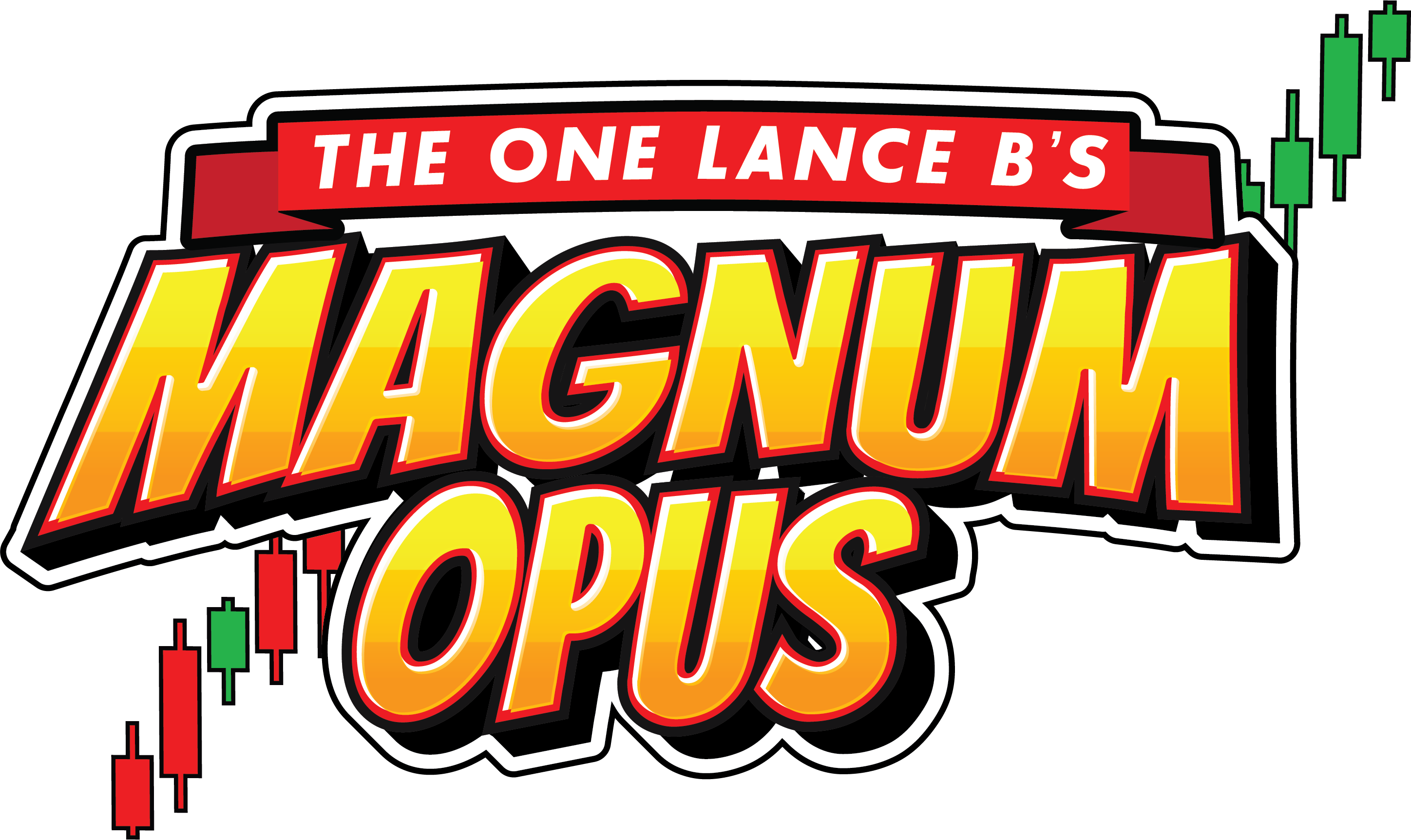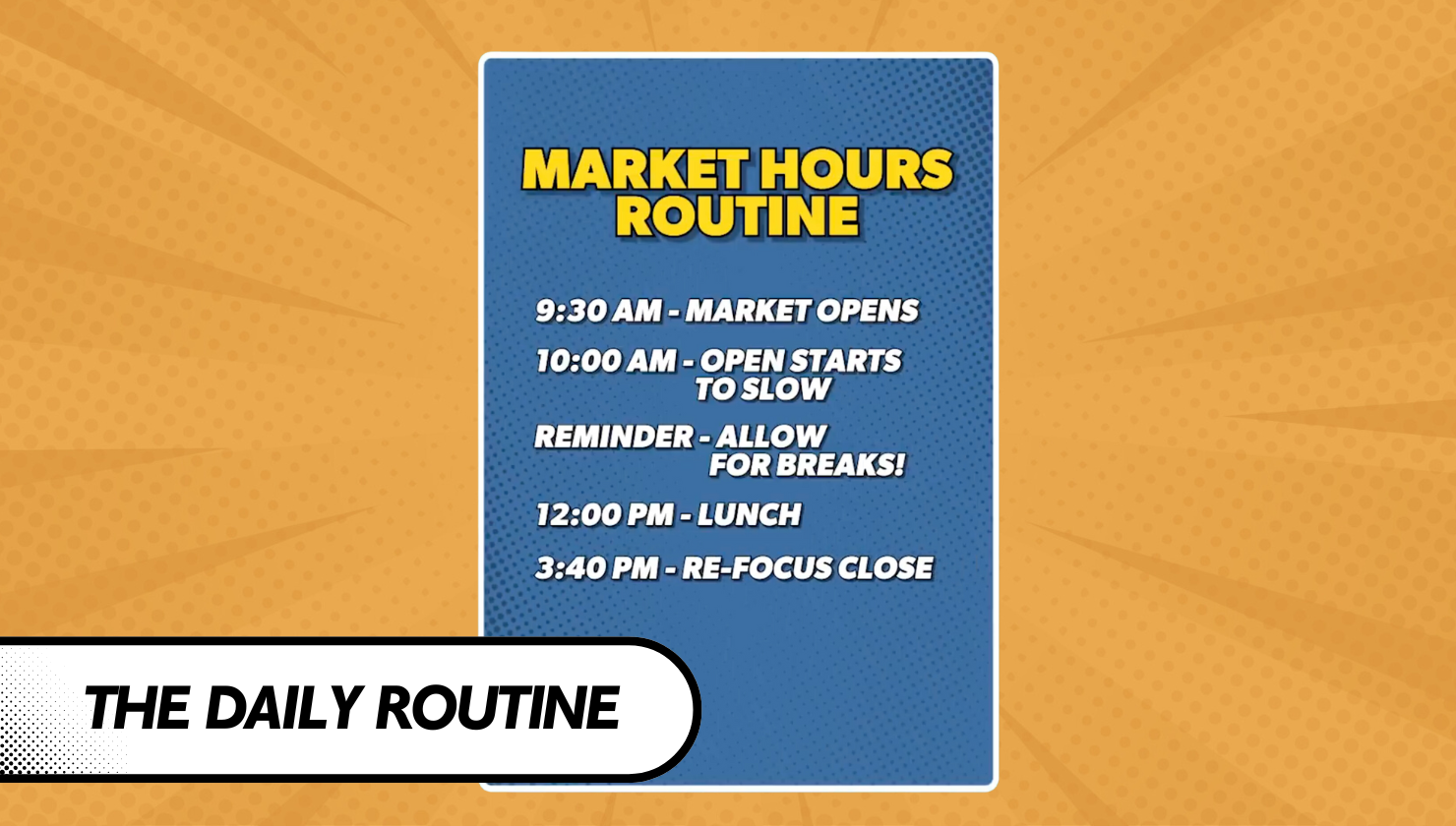If you study elite performers in any field, you’ll quickly realize something they all have in common: rituals and systems that support peak performance. Whether it’s Kobe Bryant shooting in the gym at 4 AM or Steph Curry’s meticulous pre-game warmups, greatness is rarely an accident. These athletes don’t just show up and wing it—they prepare with purpose. Their routines are legendary, and rightfully so.
Now, imagine showing up to a championship game and finding out that Steph Curry didn’t warm up. No stretching, no shots, just straight into the action. It’d be absurd, right? Yet, this is exactly how many traders treat their profession—jumping into the markets without warming up mentally, emotionally, or strategically.
Let’s be real: trading is a high-performance discipline. Without a solid routine, you risk not only underperforming—you’re potentially setting yourself up for burnout, missed opportunities, and even career-ending mistakes. I’ve seen it firsthand. Brilliant, passionate traders who couldn’t get off the starting blocks—not for lack of talent, but because they never built the infrastructure to consistently show up at their best.
A routine isn’t just about discipline. It’s the scaffolding that supports everything else: mental clarity, strategic insight, emotional regulation, and long-term sustainability. If you’re not sure where to start, James Clear’s Atomic Habits is a must-read. Actually, read it twice.
My Daily Trading Routine: A Breakdown
Over the years, I’ve developed a daily routine that became my anchor. Like Jiro from the documentary Jiro Dreams of Sushi, I found peace and performance in repetition. The routine helped ground me—and more importantly, it helped me show up prepared, day after day.
I break the day into three main segments:
- Pre-Market (Wake-up to market open)
- Market Hours (9:30 AM – 4:00 PM)
- After Hours (Post-close until bedtime)
Let’s walk through each.
Pre-Market: The Calm Before the Storm
I start my day at 7:30 AM—no snoozing, no chaos. Crucially, I don’t check the markets the moment I wake up. I intentionally give myself space to stay grounded. If anything urgent has happened overnight, I’ll get an alert on my phone. Otherwise, I stick to the routine.
I take my time: shower, breakfast, maybe some meditation. No rushing. My goal is to begin the day with calm, collected energy. Around 8:00 AM, I head out for a walk to the office—getting that morning sunlight, as Dr. Andrew Huberman often recommends. Only then do I begin easing into market prep.

By 8:30 AM, I’m deep into the news cycle. I’m scanning for:
- Premarket movers
- Earnings reports
- IPOs
- Macro catalysts and economic events
From that research, I build a watchlist. This isn’t just a casual list—it’s my tactical blueprint. I identify key technical levels, set alerts, and plan potential trades. I’ll also revisit my economic calendar to make sure I’m fully aligned with the day’s potential catalysts.
Around 9:00 AM, I do a “temp check” on my mindset and begin filling out my Daily Report Card, a tool I use to evaluate my performance. I’ve broken that process down in another post, but in short—it helps me set a clear, actionable goal for the day. It could be something like, “Stay with the trend,” and I’ll actually visualize this goal before the bell rings.
By 9:20 AM, it’s quiet time. No more chit-chat. Just focused breathing and visualization. I go over my goal again and again in my head—“Today is a win if I don’t fight the trend.” That mantra stays front and center throughout the session.
Market Hours: Focused Execution
Once the market opens, it’s go time. I’m zeroed in on my watchlist, reacting to setups and opportunities. The first 30-60 minutes are usually the most active. By around 10:00 AM, things settle, and I shift gears into a more passive state—updating alerts, checking scanners, monitoring news feeds.
A key part of my day is the Focus Break. These are brief check-ins where I’ll stretch, hydrate, and assess how I’ve been doing so far. I also update my Daily Report Card in real time. This isn’t just about reflecting—these breaks help me course-correct while the game is still on. If I’m drifting into bad habits, I want to catch it then, not hours later.
At noon, I take a real break. I go outside, get some air, and eat something light. It’s tempting to stay glued to the screen, but I’ve learned that walking away—even if it means missing something—improves my performance in the afternoon. Every time I skip that break, I pay for it with sloppy decision-making later.
When the markets are slow, I’m not just sitting there. I use that time to brainstorm, journal, review trades, or work on new projects. Anything but idle time. Some people waste these hours scrolling or zoning out. Not me. I treat every moment as a chance to sharpen my edge.
As we near the close—around 3:40 PM—I refocus. I’m watching for closing imbalances, reviewing my positions, and making sure I haven’t missed anything crucial. If there are post-close earnings or catalysts, I’ll prep for those, too.
After Hours: Review, Reset, and Recharge
From 4:00 to 4:15 PM, I stay in my seat to monitor any final movements. Then I shift into review mode. I’ve often said my real workday begins when the market closes. That’s when the learning happens.
I go through trades and trim down a highlight reel—a concise video of my best trades or key moments. This becomes an invaluable review tool. I also start organizing charts, pasting them into my Daily Report Card template, and noting any standout moments.
The mental effort required for this isn’t too heavy—it’s mostly cleanup work. After a long day of trading, your brain’s fried. But this kind of prep sets you up for meaningful study later.
Around 6:00 PM, I hit the gym. Then it’s dinner, some downtime, maybe a show, a game, or a hangout with friends. Between 6:00 and 9:00 PM, I’m fully checked out. No stocks. No emails. No analysis.
At 9:00 PM, I come back for one final push—finishing the Daily Report Card, reviewing trades, and making notes for tomorrow. Just one focused hour. Then it’s time to unplug, read something light, and wind down. By 10:30 PM, it’s lights out.
Special Circumstances: Big Days, Sick Days, and Vacations
If I know there’s a big macro event or a volatile setup coming—like FOMC or CPI—I double down on the process. No alcohol. No heavy dinners. No late nights. The better I sleep, the sharper I’ll be.
The morning of a big day? I don’t rush. I follow the same exact flow, maybe with a little more buffer time. I make space for deep breathing and extra visualization. I try to block out the noise—even if the whole trading floor is buzzing with excitement. I don’t want hype; I want clarity.
And what if I’m sick or exhausted? I don’t trade. Period. If I absolutely have to, I keep it tight: small size, hard stops, minimal exposure. But generally, rest is non-negotiable. I had to learn that one the hard way.
Yes, I take vacations. I take breaks. And I never regret them. As long as I’ve done the work, I’ve earned the right to step away. When I’m out, I’m out—no half-trading or checking the charts from the beach. That’s how people get hurt.
Work Hard. Recover Harder.
There’s a quote from Atomic Habits that’s stuck with me. James Clear’s father once told him, “When you’re on the field, play as if nothing else matters. When you’re off the field, remember that the game doesn’t matter at all.”
That’s how I approach this career. During market hours, I give it everything. But once the day is over, I detach. I rest. I live. It’s not a contradiction—it’s a necessity. It’s how you build a long, sustainable career in this game.
Success in trading isn’t about grinding yourself into dust. It’s about structured, focused effort, followed by intentional recovery. My day isn’t built around maximum hours—it’s built around maximum effectiveness.
So if you’re serious about trading, stop flying by the seat of your pants. Build your routine. Stick to it. Let it evolve over time. Because that structure is what’s going to keep you in this game long enough to win it.
(Please note that some links on this blog are affiliate links. As an Amazon Associate, we earn from qualifying purchases. This means we may earn a small commission when you purchase through links on our site, which helps us continue to provide valuable content. Thank you for your support!)






